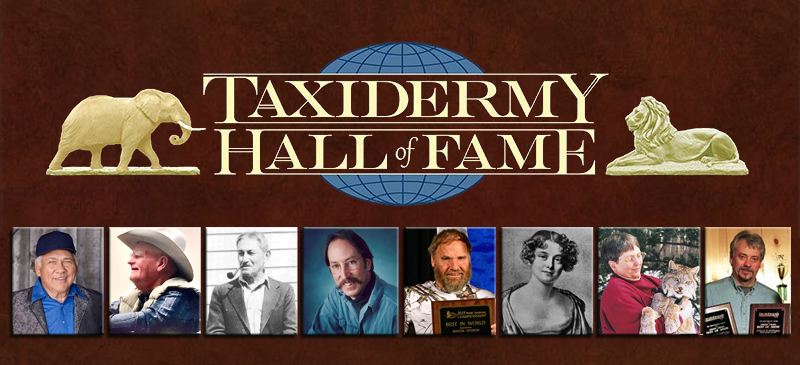
The Taxidermy Hall of Fame is proud to introduce the current nominees for the class of 2023. The final four inductees will be announced during the Saturday night Awards Banquet at the Texas Taxidermists Association Convention in Killeen, Texas on June 24, 2023. The induction ceremony will held on July 22, 2023 during the National Taxidermists Association convention in Sioux Falls, South Dakota. The eight current nominees are as follows:
Henry Aguilar
Rod Connelly
Will Richard
Stefan Savides
Rodney Schreurs
Jane Catharine Tost
Jan Van Hoesen
Fred Vanderburgh

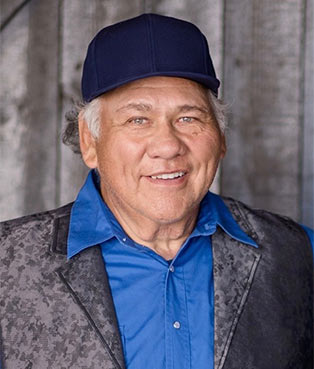
Henry Aguilar
Date of Birth: February 5, 1957
Place of Birth: Kingman, Arizona
Current Location: Kingman, Arizona
Henry Aguilar, born in Kingman, Arizona on Feb 5, 1957, was raised outdoors where he spent his youth discovering the magic of wildlife and their interactions with each other and their habitat. In the early 70’s, Henry’s fascination with ecology, coupled with his budding artistic interests, developed into a driving passion that prompted him to take the Northwestern Taxidermy correspondence courses. Mounting everything he could get his hands on, his confidence increased and hung out his shingle. As the only taxidermist in Kingman, the trophies poured in and Henry’s experience and skill level quickly grew. His humility, straight-forward honesty, top-quality work habits, and fair business practices were the recipe for success, which forged a bond of trust within the outdoor community not seen in many years. This early entrenchment into the outdoor community, in addition to his easy-going nature and Mayberry mentality of honor and handshakes, opened the door and Henry’s popularity soared.
Rather than basking in the glow of his success, Henry took responsibility for his education and never stopped trying to perfect his art. His goal was to get his mounts looking as close to Mother Nature as possible. Henry strove diligently to enhance his understanding of animal behavior and anatomy. He raised live deer and other animals for reference and still runs a mini-farm. He served a short apprenticeship with master sculptor, Forrest Hart, where Henry’s understanding of anatomy and sculpture rocketed to new levels. He attended NTA and state conventions where he hungrily absorbed information from the seminars and specialized trainings put on by the world’s leading artists. Henry said the best part about competing was the one-on-one critique by the judges after the show.
Henry expressed gratitude for the talented artists who helped him gain a footing in the industry—artists like Henry Inchumuk, Jeff Seivers, and Forrest Hart, to name a few. This early desire to learn all he could from whomever he could helped shape his mindset for the master artist & educator he was to become. To this day, Henry assists anyone in any way he can. He has no closely guarded trade secrets and believes educating each other helps lift the industry as a whole. In fact, Henry gives God all of the credit for everything he’s accomplished. As a man of faith, Henry sincerely feels very blessed. Personally, I believe it’s this spiritual focus that sets Henry’s mounts in a class all their own.
Henry’s contributions to the industry don’t stop at his mounting stand & salt pile. He is and always has been deeply involved in his family and community. In addition to running a business, he sponsors youth activities, attends church regularly, was a boy scout leader, volunteered at the schools (Henry’s wife Hilda was a school teacher), and plays guitar when requested for special occasions (Henry is an extremely gifted musician). Henry is active in organizations that benefit wildlife such as the AZ Antelope Foundation (Founding Member), AZ Taxidermy Artist’s Association (President 1990’s), Ducks Unlimited, Desert Bighorn Sheep Society, FNAWS, Trout Unlimited and others.

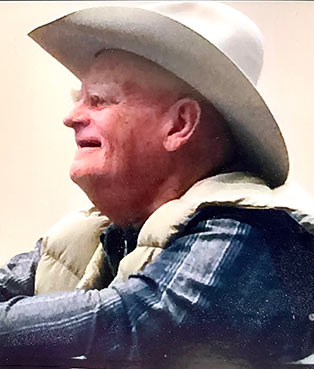
Rod Connelly
Date of Birth: August 18, 1937
Place of Birth: Clinton, Pennsylvania
Date of Death: July 5, 2021
Roderick “Rod” Francis Connelly’s contributions to the Taxidermy Trade was recognized by many leading taxidermists and industry professionals throughout his career. Whether he was hunting, fishing, his enthusiasm for nature and conservation was his lifetime ambition. He was at ease and respected by many family members, friends and associates during his life. He was a devoted family man and loyal friend to many. He was an outdoorsman, who loved to hunt and fish, and shared his knowledge and skills with his wife, Ella Mae, and three sons Aaron, John, and Brian. His son John said at Rod’s eulogy, “He was never shy to express his opinions on many subjects. I would say Dad had a unique “love language” that often reminded me of words like stubborn, direct, boisterous, and disciplined!! After you listened and learned to understand Dad, you couldn’t help but respect this man for his dedication to service and helping so many people during his lifetime. Dad was a generous man, offering his time and talents to many people when they least expected it.”
Rod became involved with the taxidermy trade early in his working life. The words his son John spoke during Rod’s eulogy carried through in all avenues of Rod’s life, especially the trade of taxidermy. He was innovative and talented in all phases of taxidermy, winning many awards at the Pennsylvania competition, NTA, and World Taxidermy Championships. Some of his numerous awards include: Best of Show, People’s Choice, Master of Masters, McKenzie Distinguished Service Award (2009), PTA Taxidermist of the Year Award (1992) and the NTA Award of Excellence. His taxidermy was highly respected and he served as a judge at many state and national competitions, and the World Taxidermy Championships®. Rod always was willing to teach and train anyone who desired to advance their techniques and trade knowledge and served as an instructor at many shows at his own expense.
In the mid 1970s Rod opened Bear’s Den Taxidermy in Pittsburgh, Pennsylvania. He was a pioneer in the emerging technology of freeze-drying and Rod soon became noted for his processes of producing high quality freeze-dry taxidermy nationwide.
He was a founding member of the Pennsylvania Taxidermists Association, serving on its board for many years, including the offices of vice-president and president. His service to statewide outdoor resources continued to expand when he was appointed to serve on Pennsylvania Governor Rendell’s Advisory Council for hunting, fishing, and conservation, which resulted in two 4-year terms. During this time he was also appointed chairman of the Pennsylvania Taxidermy Examination Board, which was the licensing authority for commercial taxidermists in the state of Pennsylvania. As Rod’s involvement and service continued to expand in the taxidermy trade, he accepted another position as a Deputy Waterways Conservation Officer for numerous years in the 1980s and 1990s.
For the last 13 years of his life, Rod was unable to walk due to complications from contracting polio at age 17. He never let this stop him from living life to the fullest as Rod and his power chair were consistently present at many conventions around the country.
One of Rod’s biggest contributions to the taxidermy industry was when he was appointed to the board of the National Taxidermists Hall of Fame Foundation (now called the Taxidermy Hall of Fame). The Foundation at that time had a physical location which was housed in a privately owned museum in Pennsylvania. When that museum closed, Rod was the leading proponent to find a new home for the Foundation and its assets, spending many years and a tremendous amount of time in his efforts. Another venue was found in Pittsburgh, Pennsylvania, but that building was sold soon after moving into it. Rod continued his vigilance until his health reached a point where he realized a new board must be appointed to continue his work.
Rod’s lifelong efforts in the taxidermy trade, and his unselfish contributions to sustain public land and wildlife natural resources, make him a natural choice as a nominee for the Taxidermy Hall of Fame. The Pennsylvania Taxidermists Association recently established an award honoring Rod by presenting the first Rod Connelly Bronze Memorial Medallion to a distinguished PTA taxidermist who exemplified leadership, teaching individuals by lessons in his shop as well as state convention seminars. John Connelly, his son, stated, “Dad taught us well and our family. Ella Connelly, Aaron Connelly (Denise), John Connelly (Dawn Marie), and Brian Connelly (Erin) would be honored to know his legacy and ultimate achievements will be forever recognized as a member of the Taxidermy Hall of Fame.”

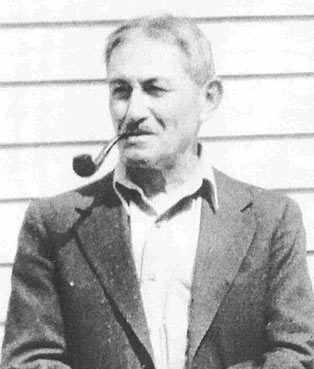
Will Richard
Date of Birth: February 24, 1876
Place of Birth: Enosburg Falls, Vermont
Date of Death: August 10, 1971
Burial Place: Paradise, California
Will Richard’s career as a taxidermist dates back to the late 1800s until his death in 1971. He has provided taxidermy specimens to numerous museums including the Museum of Natural History (New York State Museum – Albany, New York), Denver Museum (Colorado), Buffalo Bill Museum (Buffalo Bill Center of the West – Cody, Wyoming) as well as others. He did taxidermy for people from all over the world and had an international reputation as a taxidermist, sculptor, artist, outdoorsman, fisherman and hunter.
(The following is taken from an interview with Will Richard in 1964 by the Paradise, California newspaper the “Sacramento Bee” — April 23, 1964)
The mother of Will C. Richard had no way of knowing that spring day in 1881, that the wide eyed five year old at her elbow as she attempted to stuff a game bird, would grow, in manhood, to become an authority on taxidermy.
She had hoped that, some day, he would become a doctor, but young Will, prompted by his mother’s interest in wild animals and birds and, some seven years later by his father’s gift of $2.50 muzzle loading shotgun, began experimenting with ways to preserve the animals and birds he found on his parents Enosberg Falls, Vermont farm.
Richard recalls, “There were no books on taxidermy that satisfied me so I began, literally, from the ground up.” His first attempts, he admits, were crude. But, as his interest developed, he found by mixing a concoction of clay, petroleum jelly and a small amount of beeswax, he could mold a likeness of his subject. Over the sculpture, Richard placed burlap and plaster of Paris. Once the plaster hardened, he removed the clay model and placed the skin over the plaster cast.
His success was so marked, that, at the age of 19, he applied for a job as taxidermist at the New York State Museum in Albany, New York. “They didn’t think I could handle the job,” he chuckles, “but they agreed to pay me $3.00 a day on a trial basis.”
Will Richard stayed, and, over a three year period replaced the entire state museum collection with his own work. During those years he became one of the first taxidermists to exhibit wild animals and birds in family groupings and in their natural habitat. Most of his original museum collection is still on display at Albany and, he is told, is still in good condition.
Will left the museum in 1901 and traveled to Cody, Wyoming with his brothers, Fred and George and worked on a ranch outside of Cody until 1904 when the owner passed away and he returned to New York. He went back to the museum to work and worked alongside of James L. Clark. He married, but decided he wanted to travel and own his own taxidermy shop so he returned to Cody, Wyoming and in 1906 opened the Richard Taxidermy Shop and Cody Museum, which housed his taxidermy mounts from his travels around the world. He mounted trophy heads for such luminaries as President Theodore Roosevelt, William F. “Buffalo Bill” Cody, Painter W.R. Leigh, western furniture maker Tom Molesworth and western Hollywood saddle maker (who started his saddle business in Cody, WY), Ed Bohlin as well as numerous others.
Richard had discovered, early in his career, that to do an accurate job in mounting animals and birds, he must study them in their natural habitat. For this purpose, and to obtain animals for his taxidermy profession, he became an avid hunter. “The only part of the world that I haven’t hunted, ” he says, “is Australia.”
During the years between 1906 and 1952, when he retired, Will Richard traveled extensively. In his hunting, he has painstakingly jotted down exact anatomical measurements of the animals taken in order to recreate them in a more lifelike manner in his taxidermy studio.
His hunting hobby and his taxidermy profession have led him to still another pastime, painting. Early in his career, Richard took western artist W.R. Leigh on a pack trip into Yellowstone National Park and used the occasion to learn to paint by watching a professional at work. W.R. Leigh wrote numerous stories about hunting and painting with Will Richard in his autobiography book.
Will Richard has spent much of his retirement continuing in his taxidermy profession, and in 1962, he mounted a wildcat, which had been shot in Paradise, California, and presented the animal to Paradise High School, where it is on display in a trophy case, and where the Paradise High School Bobcats can admire their own mascot. An interesting note; the town of Paradise almost completely burned to the ground in 2018, part of the school was saved along with Will Richard’s mascot.

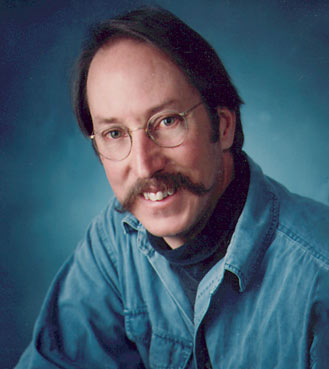
Stefan Savides
Date of Birth: April 1, 1950
Place of Birth: Pomona, California
Current Location: Klamath Falls, Oregon
Stefan Savides is a true artist. This man was born with a total fascination of the natural world. Like many of us, we had early childhood interests in nature, however, in Stefan’s case, those interests were nurtured by his mother who taught him to embrace the teachings and beauty of nature. Stefan was totally influenced by this exceptional woman who saw his obsession with birds at an early age, and instead of exposing him to the Cub Scouts, she formed a junior Audubon club. She organized weekly meeting with eight-year-old Stefan and a handful of friends and taught them many things about birds.
When Stefan was twelve he managed to connect with a retired preacher who practiced taxidermy as a hobby who taught him a very basic beginning in bird taxidermy. From then he scoured the roadsides and beaches looking for dead birds to mount. By age sixteen, Stefan had built a reputation that had caught the attention of people in his hometown of Vacaville, California, and he was asked to teach a taxidermy class to adults through a city night-school program. It ran for a two-year period and numbered up to fifty students. By this time he had also built a thriving clientele base and was looking to expand.
When Stefan graduated from high school, he collected his tools and packed everything he owned into a Volkswagen and headed north to the Klamath Basin, at the border of California and Oregon and one of the largest waterfowl staging areas in the country, and he set up shop in a wild duck processing plant. From that day forward he was swamped with work!
He constantly wanted to learn more so he attended his first taxidermy show, the World Taxidermy Championships in 1985. He came away from that show with a Second in World Upland Gamebird, Second in World “Other” Bird, and Third in World Waterfowl. It was then that he set the personal goal to be asked to judge that show someday. That someday happened very soon and he judged the World Championships for two decades running.
During this period he created one of the most complete lines of anatomically correct bird forms for Research Mannikins. He started conducting avian workshops in his studio as well as across the country. He has judged just about every state taxidermy show in the United States, as well as competitions at the National Taxidermists Association, Canadian Taxidermy Association, International Guild of Taxidermists, Scandinavian Taxidermy Association, and New Zealand Taxidermy Association. Stefan was also a prolific writer and wrote many articles for Breakthrough magazine on everything from how-to to judging and artistic composition.
His taxidermy expertise caught the eye of collectors from across the country. This afforded him to travel around the globe caring for bird trophies in the field. This included a number of trips to Africa with Mr. and Mrs. Dick Cabela. He subsequently spent a ten-year period working on integrating hundreds of bird mounts into the 53,000-square-foot dream home of the Cabelas. This project also included numerous bronze fixtures that enhanced the project as well.
Many years ago Stefan had the vision that if he wanted to leave a lasting mark on the world of wildlife art it would be best to do it in bronze, and fifteen years ago he embarked on this second and new venture of his life. Taxidermy brought him to sculpting bronzes, and before leaving taxidermy as his main profession, he had a tremendous impact of thousands of today’s waterfowl taxidermists.
He is now represented by numerous prominent galleries across the country and his work has found its way into public and private collections belonging to the Cabelas; Johnny Morris, founder and owner of Bass Pro shops, and the George H. W. Bush Presidential Library.
It would be easy to say that not only has Stefan given his life to taxidermy, but also his generous gift of knowledge has inspired countless others to push forward and explore their own talents in an art form that was for so many years a secretive trade.
It is the rare and blessed few that are born into this world with a passion that was not to be interrupted by the complexity of the modern day we live in. He has embraced a total connection to the beauty and teachings of nature, which has guided his choices at each crossroad he’s encountered. The common thread, which binds his life, are birds and his work with birds from around the world embodies the fruit of that journey. Stefan Savides belongs in the Taxidermy Hall of Fame.

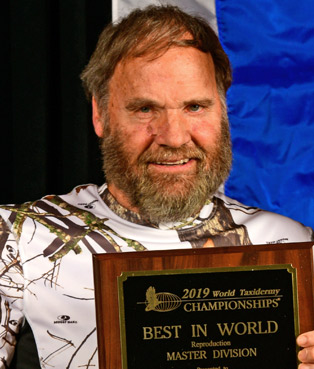
Rodney Schreurs
Nominee: Rodney W. Schreurs
Date of birth: December 28, 1954
Place of birth: Sheboygan, Wisconsin
Current Location: Cedar Gove, Wisconsin
Rodney Schreurs was born in 1954 into a family of six children in the city of Sheboygan, Wisconsin. His father was an avid hunter and even as a young boy, Rodney shared his father’s affinity for hunting and the outdoors. From a young age, he exhibited a natural talent for art and spent many hours studying and sketching wildlife. This fascination with the natural world developed into a passion for taxidermy. Like many budding taxidermists of the time, his training began with the Northwest School of Taxidermy Correspondence Course at age twelve after he split the cost of the course with a friend. Over the years, Rodney practiced taxidermy and his skills continued to develop and improve. It was always his intention that taxidermy be a means to express himself and preserve the memories from his time afield.
In the early 1980s, he attended the Milwaukee Sports Show with his wife, Linda, which was being held in conjunction with the Wisconsin State Taxidermy Championships. He was so inspired by the work at the show that it motivated him to compete himself. He worked his way up through the ranks and was soon competing at the Master’s Division. He decided to enter his first World Taxidermy Championships in 1997. As he debated what to work on for the show he recalled, in awe, some of the beautiful specimens he had seen displayed at past competitions. Realizing that he didn’t have access to anything similarly beautiful or exotic, he decided to take a risk by picking a lesser admired member of the animal kingdom and try to get it noticed. The subject for his first World Show piece would be an Opossum.
Rodney also noticed what seemed to be an underdeveloped aspect of taxidermy in competition pieces, convincing and realistic open mouth work. He had been perfecting his mouth work skills, but had yet to compete using the techniques he was developing. He decided to take an even greater risk and display the Opossum with an ultra-realistic open mouth in the process of raiding a duck nest.
After countless hours working on his piece, his gamble paid off tremendously. He won his first two gold medallions at the 1997 World Championships, Best in World Lifesize Mammal and Judge’s Choice Best of Show. The piece also took home People’s Choice Best of Show. With his first World Show win, the bar had been raised. Many competitors came to realize that not only opening the subject’s mouth, but doing so in an ultra realistic and flawlessly executed manner, was necessary to compete at the highest levels. This trend still continues even to this day. With this remarkable piece of taxidermy, Rodney had singlehandedly awakened the industry to the degree of realism that was possible.
Over the next twenty two years, he went on to collect seven more Best in World Titles and eight more gold medallions utilizing subjects that were less mainstream that most competitors. Of his World Titles, four have come in different categories and he has accomplished every Best in World title with a difference species, a staggering accomplishment that may never be eclipsed. Many years ago he set a personal milestone to reach ten World Taxidermy Championship gold medallions. He realized this dream at the World Championships in 2019, surrounded by many members of the Wisconsin Taxidermy Association that have looked up to him and competed against him for decades. That night, he won his eighth Best in World gold medallion and his tenth overall gold, which placed him at the top of the all-time list.
Rodney’s accomplishments in the competitive taxidermy arena are unparalleled. His longevity in the industry and his ability to compete at such a high level for so long are astonishing. His innovative open mouth techniques have produced some of the finest, most memorable and realistic pieces of taxidermy the industry has ever seen. He has been a judge, seminar instructor and during his long tenure as a member of the Wisconsin Taxidermy Association he has served as a steady and constant inspiration to many young and experienced taxidermists alike, motivating them to compete harder and push their own limits.
Throughout his career, Rodney Schreurs has embodied the many qualities that should garner consideration for induction to the Taxidermy Hall of Fame. He has been a humble, yet fierce competitor; in fact, the most decorated of all time. He has pushed his personal limits and in turn brought innovation to the industry; expanding the vision of what many taxidermists thought was possible. Rodney Schreurs has elevated the art of taxidermy to new heights and your consideration to induct him to the Taxidermy Hall of Fame is greatly appreciated.

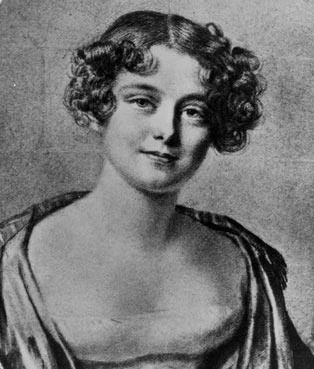
Jane Catharine Tost
Nominee: Jane Catharine Tost
Date of birth: March 16, 1817
Date of death: April 24, 1899
Place of birth: London, England
Burial place: Rookwood Cemetery, Sydney Australia
Jane Tost’s nephew Rowland Ward, was to later became internationally renowned for his big game taxidermy methods as The Wards of London and his “Wardian” animal furniture.
Jane Ward married Charles Gottleibe Tost on April of 1839, a Prussian-born pianoforte maker. They were to have six children. During the 1840s and 1850s Jane was employed at the British Museum for a period of some 15 years, preparing specimens under the likes of John Gould during an era where new and exciting species were being discovered back in the colonies that required classification and illustration. In 1856 Charles and Jane Tost along with their 6 children, up-rooted from England and sailed from Liverpool to reached the colony of Hobart in Tasmania, Australia, where Jane took up a position stuffing and mounting specimens for the Royal Society of Tasmania at the Hobart Town Museum [now part of Tasmanian Museum and Art Gallery].
In 1864 Jane departed the Hobart Town Museum for the mainland to further herself in her career as a taxidermist, and took up a position at the Australian Museum [Sydney] employed within the taxidermy department, its first ever professional female staff member.
Jane was also the first woman to receive the equal pay of her colleges of 10 pounds per month, a salary that was testimony to her high level of skill as a taxidermist.
Five years later In 1869, Jane left the Australian Museum, but remained in a sound business relationship with that museum which arranged for the purchase of specimens from her during the following year of 1870, and thus begin an association with her enterprise that would keep the institution well supplied with collection items for the next 50 years.
By 1872 Jane Tost entrepreneurial skills enabled herself to establish (along with her widowed daughter Ada Coates) the work shop and taxidermy enterprise of ‘Tost & Coates Berlin Wool Depot and Taxidermists’ at 60 William Street, Sydney, Australia.
Catering to a growing middle-class taste for fancy work and stuffed material in interior decoration, as well as to scientific collectors and museums the business was a great success supplying and dealing in all manners of natural history and tribal artefacts during the boom years of collecting throughout the world.
Jane and Ada also offered lessons in taxidermy and fancy work, a first in the developing colony of New South Wales. Women’s diaries and ladies’ art manuals show that taxidermy was a leisure activity for some middle and upper-class women in the 19th century.
Following Ada’s marriage in 1878 to Henry Stewart Boventure Rohu, a Scottish-born upholsterer and curio collector, the firm became Tost & Rohu. The business grew, selling an eclectic mix of furs, stuffed animals, and Aboriginal and Islander artefacts.
For thirty years Jane Tost and her daughter, now Ada Rohu, were the most successful New South Wales exhibitors at international shows, winning over 20 medals. Their exhibits, ranging from a stuffed black swan to a wallaby fur muff, were prized not only for the skill displayed, but also for the ingenious adaptation of the taxidermist’s art to Australia’s fauna. Her works included such famous designs as fashionable and decorative fire screens incorporating mounted birds, elegant ladies fans of her signature species, the Laughing Kookaburra and a host of other Australian species.
They promoted their business by exhibiting examples of their work (often of Australian native animals), in London (1862 and 1886), Paris (1867), Sydney’s Garden Palace (1879), Calcutta (1883), Melbourne (1888), The company founded by Jane Tost became known as Tost and Rohu and eared the title which would remain with it for over 50 years as “The Queerest Shop in Australia.”
Remarkable for her taxidermy skills, industry and business acumen, Jane Tost blazed a path for many working women to come. Jane Tost died on 24 April 1889, and was buried in the Church of England section of Rookwood cemetery Sydney Australia. Two sons and a daughter survived her. Ada and her family carried on with Janes life work until the bookseller James Tyrell bought out the business in 1923.

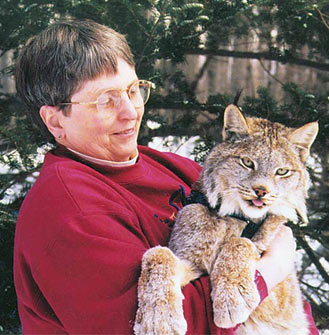
Jan Van Hoesen
Nominee: Jan Van Hoesen
Date of birth: May 5, 1942
Date of death: December 1, 2017
Place of birth: Mt. Pleasant, Michigan
Jan Van Hoesen lived in northeastern lower Michigan with a large menagerie of wild animals for live study. She held a teaching degree from Michigan State University, and served on the Board of Directors of the Michigan Taxidermist Association, the International Guild of Taxidermy, the National Taxidermists Association and the United Taxidermist Association. Jan established her world-class credentials in the early 1990’s when she took top honors at major taxidermy competitions with her outstanding mammal work, including winning the 1992 World Champion title for mammal taxidermy. She was also a respected taxidermy judge at all levels of competition, including the World Championships.
Jan Van Hoesen burst onto the scene with multiple wins at all levels of competition, winning the top awards at state, regional, national, international and World shows. She not only impressed the judges, but won numerous People’s Choice awards as well. It was always a treat for attendees anticipating what Jan would bring to a competition. Each of her small mammal entries showed a exciting new take on the species. The poses she chose had never been seen before in any taxidermy works. They all seem to capture subtle moments in animal behavior that portrayed the elusive “essence of the species” that all taxidermists strive for, but few achieve.
Jan had a secret weapon in understanding the finer points of anatomy and attitude. She lived with dozens of live animals at her home. She had bobcats and lynxes as pets in her house, and also raised raccoons, foxes and coyotes. This intimate knowledge of animal behavior gave her the inspiration to create works which always portrayed an accurate representation of nature.
Her backyard was a maze of cages, pens and hutches. She loved all the residents of her wildlife menagerie and took great care of them. As live reference is always best, she studied their behavior for hours at a time. The photographs she made of her mammals became some of the best-selling reference photo sets which are still carried to this day by major taxidermy supply companies.
When Jan was an active taxidermist, she specialized only in custom small mammal taxidermy. She did not produce assembly-line work. Each pose was carefully and artistically chosen to match the specimen. Instead of purchasing commercial mannikins off-the-shelf, Jan would meticulously cast, mold, sculpt, and create a new custom mannikin for each piece. The result was always a one-of-a-kind work of art. Through Jan’s unique knowledge of animal behavior and her artistic talent, she created beautiful works of taxidermy art which portray the very essence of the animal with honesty and dignity.
Jan was active in the politics of taxidermy, using her skills to advance the art and organizations for the betterment of the profession. She served on many boards, including the Michigan Taxidermist Association, the International Guild of Taxidermy, and the National Taxidermists Association. She was a Lifetime Charter Member of the United Taxidermist Association and served on its very first Board of Directors.
For many years, Jan sculpted mannikins for several major supply companies, and developed a line of realistic earliners as well as reference photo sets. She valliently battled the blood disease Mylodysplastic Syndrome for the final years of her life. She continued to occasionally judge competitions up until her death in 2017.

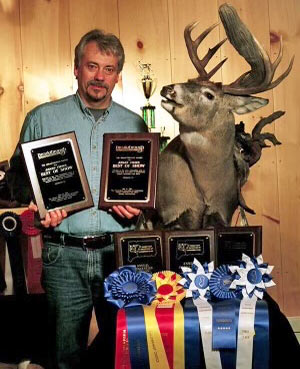
Fred Vanderburgh
Nominee: Fred Vanderburgh
Date of birth: October 31, 1949
Place of birth: Elmira, New York
Current Location: Molina, Colorado
Fred Vanderburgh was born October 31,1949 in Elmira, NY. Fred was raised by his grandparents on a dairy farm in upstate New York where hunting, fishing, and trapping were his zest in life. He loved everything about nature and being in the outdoors. Fred’s interest in taxidermy started at a young age, working on squirrels from his hunting and raccoons and foxes from his trap line.
It was during Fred’s middle adult years while pursuing his job as Director for Construction and Design at Ithaca College that his strong passion for taxidermy took an intense direction. In 1997 he took advanced workshop studies with Jan Van Hoesen and then Joe Meder. He joined and attended numerous state, regional, and national associations and the World Taxidermy Championships®. His list of major awards soon exceeded over 20 and by 2005 won the Joseph Bruchac Award, National Champion, and North American Champion for whitetail deer, along with several first-place awards in the Master Division at the World Taxidermy Championships®.
Fred is well known not only for his quality of taxidermy, but also his artistic arrangements using old weathered pine stumps and root structures as part of his whitetail compositions. Once he selects a natural design from nature, he would alter or sculpt his form in a natural pose that worked within the composition. Many others soon picked up on this technique of composing the presentations first, then sculpting the mannikin.
Fred also developed the round-eye setting method for establishing proper eye rotation in whitetail attitudes. He developed and taught his concept of geometry of the whitetail head and taught reference interpretation. Fred raised whitetails and offered workshops for many years. He judged and gave seminars at over 20 state, regional, and national shows, and eight World Taxidermy Championships®.
With his many accomplishments in the field of taxidermy, Fred has also contributed in many ways to his state association, serving for eight years as president of United Taxidermists of New York. He also served for 12 years on the Board of Directors of the National Taxidermists Association, and assisted the NTA through some very difficult times, both financially and through his leadership. His contributions to trade and association publications and teaching videos through media outlets are just a few of his timely endowments to the taxidermy community.
Fred is the owner of Visions Unlimited Wildlife Studio and now resides in Molina, Colorado.

